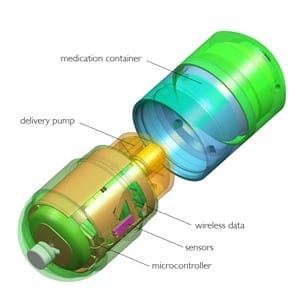
Berkeley Lab energy analysis finds gaming computers consume $10 billion in electricity per year.
In the world of computer gaming, bragging rights are accorded to those who can boast of blazing-fast graphics cards, the most powerful processors, the highest-resolution monitors, and the coolest decorative lighting. They are not bestowed upon those crowing about the energy efficiency of their system. If they were, gaming computers worldwide might well be consuming billions of dollars less in electricity use annually, with no loss in performance, according to new research from Lawrence Berkeley National Laboratory (Berkeley Lab).
In the first study of its kind, Berkeley Lab researcher Evan Mills co-authored an investigation of the aggregate global energy use of personal computers designed for gaming—including taking direct measurements using industry benchmarking tools—and found that gamers can achieve energy savings of more than 75 percent by changing some settings and swapping out some components, while also improving reliability and performance.
This corresponds to a potential estimated savings of $18 billion per year globally by 2020, or 120 terawatt hours (TWh), which is equivalent to 40 Rosenfelds, or 40 standard 500-megawatt power plants that will not have to be built. The results have been published in the journal, Energy Efficiency, in a paper titled, “Taming the energy use of gaming computers.”
“It’s remarkable that there’s such a huge overlooked source of energy use right under our noses,” Mills said. “The energy community has been looking at ordinary personal computers and consoles for a long time, but this variant, the gaming computer, is a very different animal.”
Gaming computers represent only 2.5 percent of the global installed personal computer (PC) base but account for 20 percent of the energy use. Mills calculated that a typical gaming computer uses 1,400 kilowatt-hours per year, or six times more energy than a typical PC and 10 times more than a gaming console.
“Your average gaming computer is like three refrigerators,” he said. “When we use a computer to look at our email or tend our Facebook pages, the processor isn’t working hard at all. But when you’re gaming, the processor is screaming. Plus, the power draw at that peak load is much higher and the amount of time spent in that mode is much greater than on a standard PC.”
What’s more, it’s a fast growing market segment, as console sales wane and the number of gaming enthusiasts skyrocket. Mills estimated that gaming computers consumed 75 TWh of electricity globally in 2012, or $10 billion, and projects that will double by 2020 given current sales rates and without efficiency improvements. “There are 1 billion people around the world who are gaming now,” he said. “And it’s a really diverse demographic. There are a lot of women; the median age is 31. And the popularity of these giant desktop gaming computers is growing fast.”
Good news for consumers
The good news, he says, is that there is ample opportunity—for consumers, manufacturers, policymakers—to save energy. On the regulatory side, displays and power supplies are the only components that have energy ratings today, and those ratings are voluntary. Additional ratings for motherboards, hard drives, peripherals, and other parts are “an opportunity area,” Mills said. The gaming software itself can also be designed to use energy more efficiently.
Consumers lack ready access to information that can help them to make efficient upgrades. The study measured and charted the performance versus nameplate (or rated) power consumption of many popular components. One problem the authors found was an immense variation in the nameplate power; for example, graphics processors ranged from 60 to 500 watts. Their computing performance varied considerably as well, by as much as five-fold. And there was little correlation between the two, meaning some units that were highest in performance had lower power consumption.
Read more: Gaming Computers Offer Huge, Untapped Energy Savings Potential
The Latest on: Gaming computer energy savings
[google_news title=”” keyword=”Gaming computer energy savings” num_posts=”10″ blurb_length=”0″ show_thumb=”left”]
via Google News
The Latest on: Gaming computer energy savings
- AI PCs: This Backpack Just Ate A Four-Stroke V6!on April 27, 2024 at 7:02 am
There’s a limit to which a CPU-based PC can be stretched for AI workloads. But add some GPU/NPU pistons and you could be looking at something that’s still small but now ready with all AI-chops.
- This mini PC, and I do mean mini, has a Ryzen 7000 tucked inside for $200 offon April 26, 2024 at 8:00 am
The Geekom A7 Mini PC has a powerful Ryzen 7 tucked inside, with 64GB of DDR5 RAM, all in a case about the size of a book.
- 'Wow, probably the best burger I ever made': Grab a Ninja indoor grill for just $100 — plus other deals of the dayon April 26, 2024 at 3:26 am
Snap up these wildly popular earbuds with 181,000+ five-star fans for just $21 — that's the lowest price on record and over 50% off. These little buds are waterproof, feature smart touch controls and ...
- 'Probably the best burger I ever made': Grab a Ninja indoor grill for just $100 — plus other deals of the dayon April 26, 2024 at 3:26 am
Snap up these wildly popular earbuds with 181,000-plus five-star fans for just $21 — that's the lowest price on record and over 50% off. These little buds are waterproof, feature smart touch controls ...
- If You Work From Home, Here’s 6 Tips To Create The Perfect WFH Officeon April 23, 2024 at 8:31 pm
Whether you have a dedicated home office or a space carved out in the living room, these tips can help to make it stylish, functional, and ergonomic.
- Review: The Asus Zephyrus G16 2024 sets a high bar for gaming and creator laptopson April 23, 2024 at 3:15 pm
I’ve not been impressed with laptops over the last few years, whether workhorses or gaming. They’ve always had fine ...
- Meta Platforms Unveils Groundbreaking AI Assistance System for Public Useon April 20, 2024 at 5:25 am
According to its CEO Mark Zuckerberg, a new generation of AI systems from Facebook’s parent Meta Platforms is the world’s first AI assistance system that anybody can use today for free.
- Save $650 on Legion Gaming PC with RTX 4080 SUPERon April 19, 2024 at 4:00 pm
The Lenovo Legion Tower 7i Gen 8 Intel with RTX 4080 Super Gaming PC is available on clearance, offering a 20% discount ...
- Cases, Cooling & PSU News - Page 1on April 13, 2024 at 6:59 am
Putting together a small form factor (SFF) gaming PC, or productivity PC ... 12VO is a step forward for power requirements. A 10-pin energy-saving motherboard connection delivers 12 volts to ...
- These are the best OLED monitors to buy in 2024on March 27, 2024 at 5:01 pm
The LG UltraGear 48GQ900 features a 47.5-inch panel with a 4K 3840 x 2160 resolution and a 120Hz minimum refresh rate, which can be overclocked to 138Hz for PC gaming. Other specifications on the ...
via Bing News










